Shanghai is a city where history and modernity collide in a breathtaking architectural spectacle. As China’s economic hub and one of the world’s most dynamic metropolises, Shanghai boasts an eclectic mix of architectural styles that reflect its rich past and ambitious future. From colonial-era buildings lining the Bund to cutting-edge skyscrapers piercing the skyline, the city offers an unparalleled journey through time and design. This guide explores some of the most iconic structures that define Shanghai’s architectural landscape, providing insights into their significance and the stories they tell.
Shanghai Tower
Shanghai Tower, the city’s tallest building, redefines the possibilities of modern skyscraper design. Completed in 2015 and reaching a staggering height of 632 meters, the tower’s twisting form not only enhances its aesthetic appeal but also improves its structural efficiency by reducing wind resistance. Designed with sustainability in mind, the tower incorporates advanced energy-saving technologies, including a double-layered glass facade that minimizes heat loss. As a symbol of Shanghai’s forward-thinking vision, Shanghai Tower embodies the city’s drive for architectural and technological excellence.
This tower is more than just a feat of engineering — it’s a philosophical statement. Standing at its base, looking up at its spiral of glass and steel, one gets the sense that Shanghai is reaching for the sky, both literally and metaphorically. The view from the top is breathtaking, a moment where the vastness of the city becomes truly comprehensible. It’s a reminder that human ambition, when paired with ingenuity, can reshape the very landscape of our world.
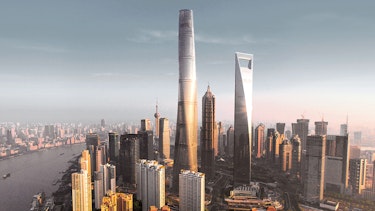
Credit: Arquitectura Viva
The Bund
A visit to Shanghai is incomplete without a stroll along the Bund, the city’s historic waterfront district. This area showcases an impressive collection of colonial-era architecture, built by international powers during the late 19th and early 20th centuries. Buildings such as the Fairmont Peace Hotel, with its distinct Art Deco design, and the Customs House, with its towering clock inspired by London’s Big Ben, transport visitors to a bygone era of opulence and international trade. The Bund remains a powerful reminder of Shanghai’s role as a gateway between East and West.
Beyond its historical significance, the Bund also serves as a backdrop for contemporary developments, with luxury hotels, modern office buildings, and rooftop bars offering spectacular views of the city. There is a tangible energy here — a reminder that the past and future coexist in Shanghai in a way that few other cities can match. Walking along the Bund at dusk, with the golden glow of the streetlights reflecting off the Huangpu River, it’s easy to feel the weight of history while gazing across at the neon-lit future of Pudong.
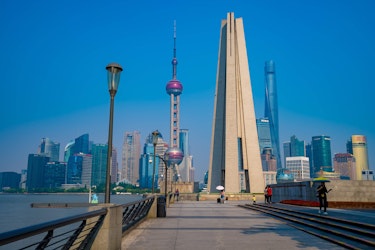
Credit: kosublog
Oriental Pearl Tower
Standing tall in the Pudong district, the Oriental Pearl Tower is one of Shanghai’s most recognizable landmarks. Completed in 1994, this striking structure features a series of large spheres supported by columns, creating a futuristic silhouette against the skyline. Inspired by a Tang Dynasty poem, its design evokes the imagery of pearls falling onto a jade plate. Beyond its aesthetic appeal, the tower houses observation decks, a revolving restaurant, and a history museum, making it a must-visit attraction for architecture enthusiasts.
At night, the tower transforms into a dazzling beacon, its lights shifting through a spectrum of colours. Some might find its design almost playful, as if Shanghai’s architects were making a bold statement about the city’s unshackled creativity. Standing beneath the tower and looking up at its seemingly weightless spheres, one can’t help but feel a sense of awe — Shanghai isn’t just embracing the future, it’s shaping it.
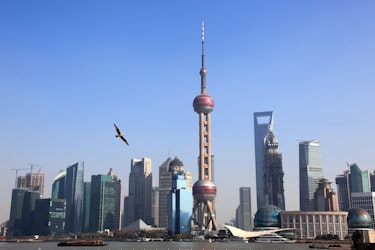
Credit: Vietjet Air
Jin Mao Tower
Designed by American architect Adrian Smith, the Jin Mao Tower is a stunning example of how traditional Chinese elements can be seamlessly integrated into contemporary skyscraper design. Completed in 1999, the tower’s tiered structure draws inspiration from the pagoda, with 88 floors symbolizing prosperity in Chinese culture. The building’s interior features a breathtaking atrium that spirals upwards, creating a mesmerizing visual experience. Home to offices, a luxury hotel, and observation decks, Jin Mao Tower stands as a testament to Shanghai’s architectural ingenuity.
For visitors, the experience inside the Jin Mao Tower is just as impressive as its silhouette on the skyline. The moment one steps onto the observation deck, there is a moment of hushed reverence — the city unfolds below in a dizzying mosaic of lights and movement. The atrium, with its hypnotic spirals, feels almost sacred, a contemporary cathedral dedicated to engineering and vision.
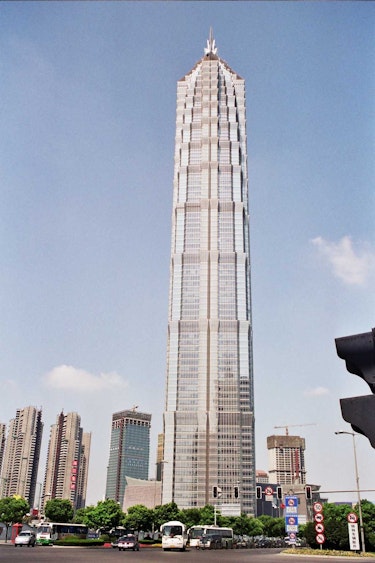
Credit: audiala.com
K11 Art Mall
Blurring the lines between commercial space and cultural landmark, the K11 Art Mall is an architectural masterpiece that seamlessly integrates retail, sustainability, and contemporary art. Designed by architect Benjamin Wood, this mixed-use development is more than just a shopping centre — it is a space where design and artistic expression converge.
The building’s facade features a combination of glass, greenery, and interactive installations, while the interior is home to curated art exhibits, immersive digital experiences, and a rooftop garden. The K11 Art Mall exemplifies Shanghai’s approach to urban development—where creativity, commerce, and community intersect to create a unique and engaging environment. Walking through its halls, visitors are as likely to encounter a cutting-edge art installation as they are a luxury boutique, reinforcing Shanghai’s position as a global centre for innovation and design.
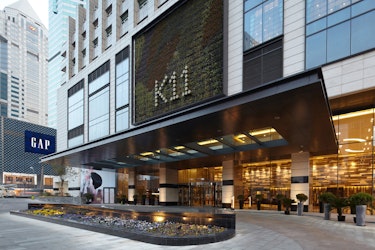
Credit: ArchDaily
Longhua Temple
While Shanghai is often associated with modernity, it also preserves elements of its historical and cultural heritage. Longhua Temple, the city’s largest and oldest Buddhist temple, dates back over a thousand years. Its iconic pagoda, with its elegant wooden structure and intricate carvings, represents a striking contrast to the city’s contemporary skyline. The temple remains an active place of worship, offering visitors a serene retreat from the urban bustle and a deeper understanding of Shanghai’s spiritual traditions.
Visiting Longhua Temple feels like stepping into another world, a sanctuary where the hum of traffic is replaced by the gentle rustling of incense smoke. The temple’s halls, adorned with golden statues and delicate woodwork, seem to whisper stories of devotion spanning centuries. In a city constantly pushing forward, Longhua Temple stands as a quiet reminder that some things— spirituality, tradition, and beauty — are timeless.
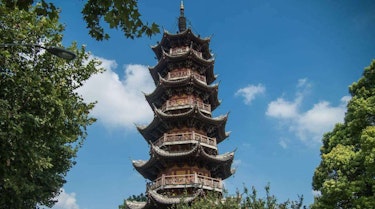
Credit: Shanghai Longhua Temple
Shanghai’s architectural landscape is a living testament to its dynamic history and forward-looking aspirations. From the timeless elegance of the Bund to the cutting-edge skyscrapers of Pudong, the city seamlessly weaves together tradition and modernity. Whether exploring ancient temples, repurposed industrial sites, or innovative high-rises, visitors can witness how architecture shapes the identity and soul of this ever-evolving metropolis. Shanghai is not just a city — it is a narrative written in steel, stone, and light, waiting to be explored and reimagined with every visit.